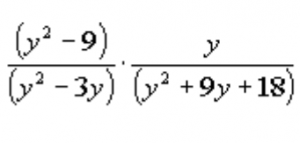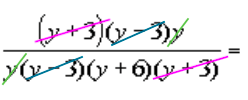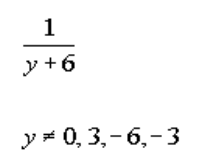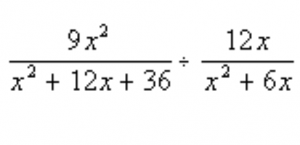13
Jan
2021
Jan
2021
Chapter 6 Summary Project – Rational Expressions and Equations
categories: Math 11
For Unit 6 – Rational Expressions and Equations, we learn a series of ideas such as: adding, subtracting, multiplying, and dividing rational expressions, solving for equations and more. In this blogpost, I will be going over 6.3 – Multiplying and Dividing Rational Expression. We were put to the task of creating a digital project that highlights our understanding of what we believe was the most important part of this unit. I choose to create a blog post describing all I know about this lesson.
Multiplying:
- When multiplying rational expressions (fractions) its important you remember that just like multiplying regularly, you can just multiple directly across.
- However, before you can do so, we have follow a set os steps:
Example:
- Step 1, Before you can begin multiplying you want to begin by checking all rational expressions (numerator and denominator) are in simplified form.
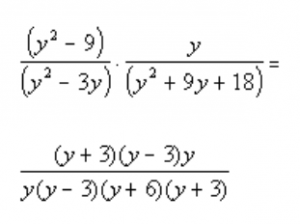
- Step 2, you can now write your quotient as one fraction. Write it as a product of the factors of the numerators over the product of the factors of the denominators. Do not multiply yet.

- Step 3, now we are able to cancel out common terms that are on the numerator and denominator. Simplify by dividing out the common factors (y + 3), (Y-3) and y.
- Step 4, now you are able to re-write the simplified version.
- The values that would be excluded from the domain are 0, 3, -6, and -3. Those are the values that makes the original denominator equal to 0. 0 cannot be the value of the denominator.
Dividing:
- Luckily, diving rational expressions (fractions) the exact same as multiply with one more step prior. Its important you remember that just like dividing, you have to reciprocate and change the sign to multiplying.
- However, before you can do so, we have follow a set os steps:
Example:
- Step 1, we begin by reciprocating the second quotient.


- Step 2, Before you can begin multiplying you want to begin by checking all rational expressions (numerator and denominator) are in simplified form.
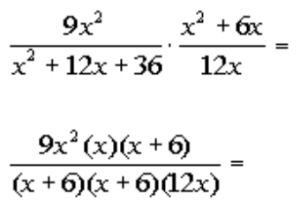
- Step 3, you can now write your quotient as one fraction. Write it as a product of the factors of the numerators over the product of the factors of the denominators. Do not multiply yet.
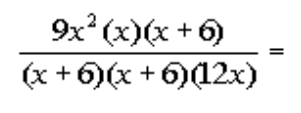
- Step 4, now we are able to cancel out common terms that are on the numerator and denominator. Simplify by dividing out the common factors 3x and (X+6)
- Step 5, now you are able to re-write the simplified version.
- The values that would be excluded from the domain are -6 and 0. Those are the values that makes the original denominator of the product equal to 0.
